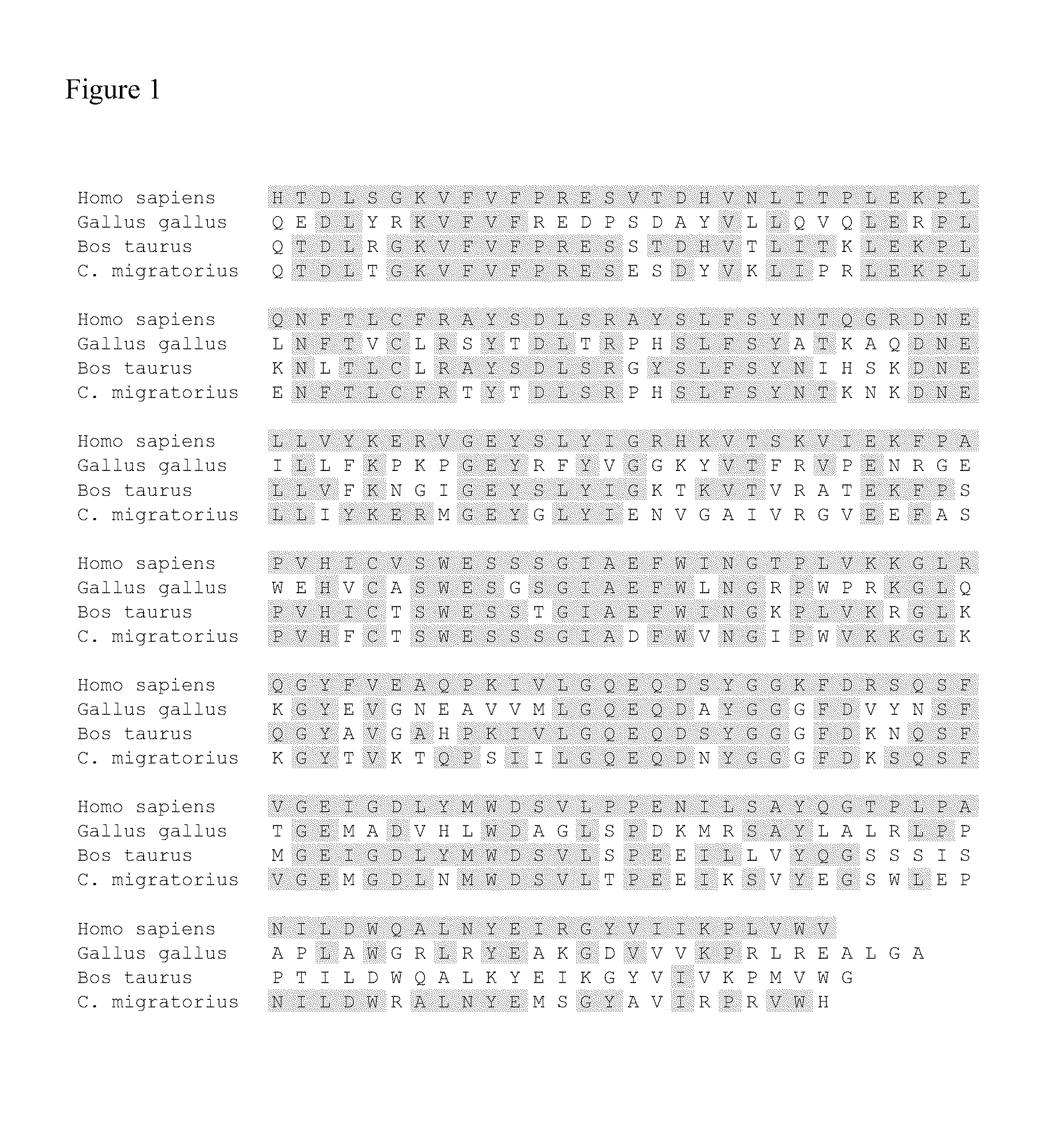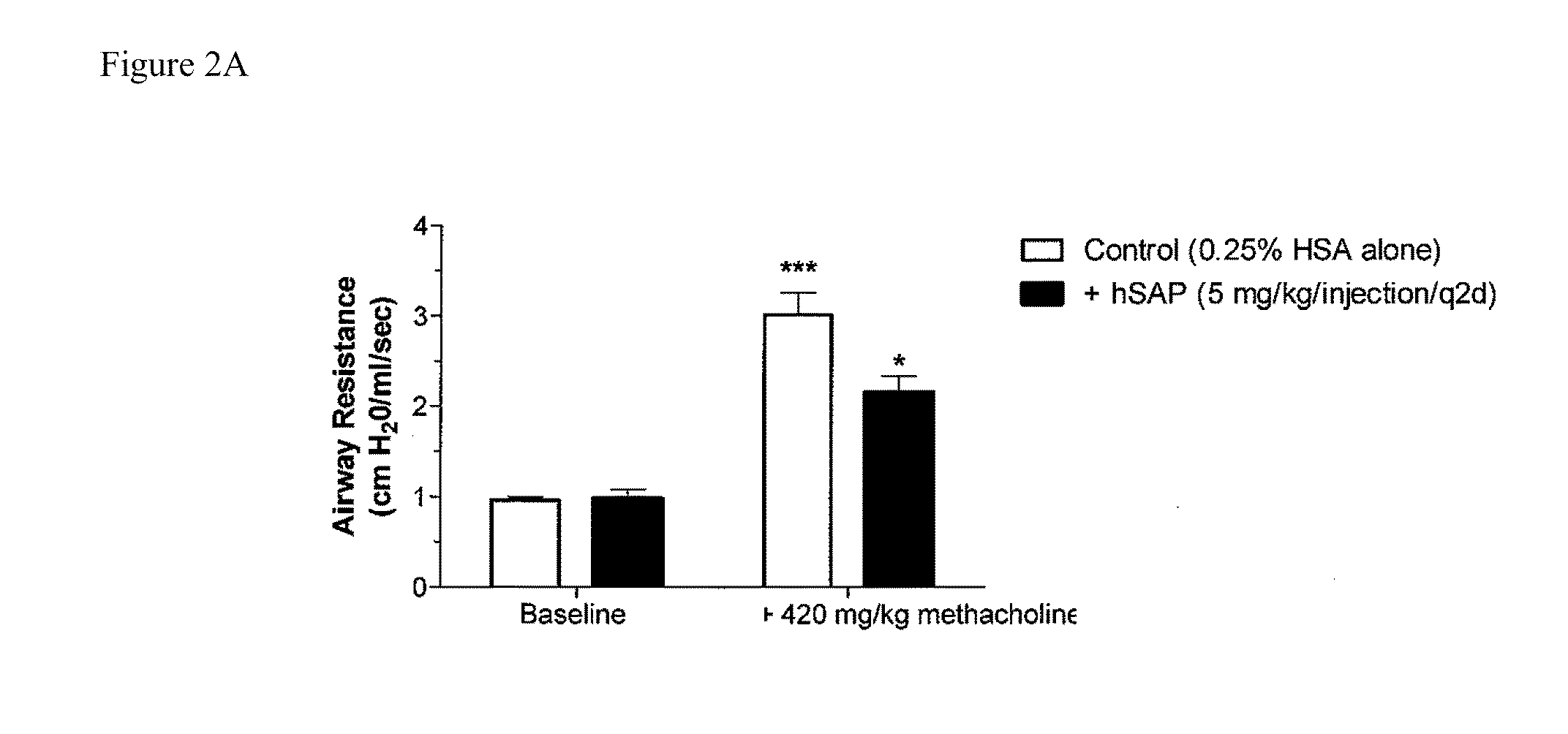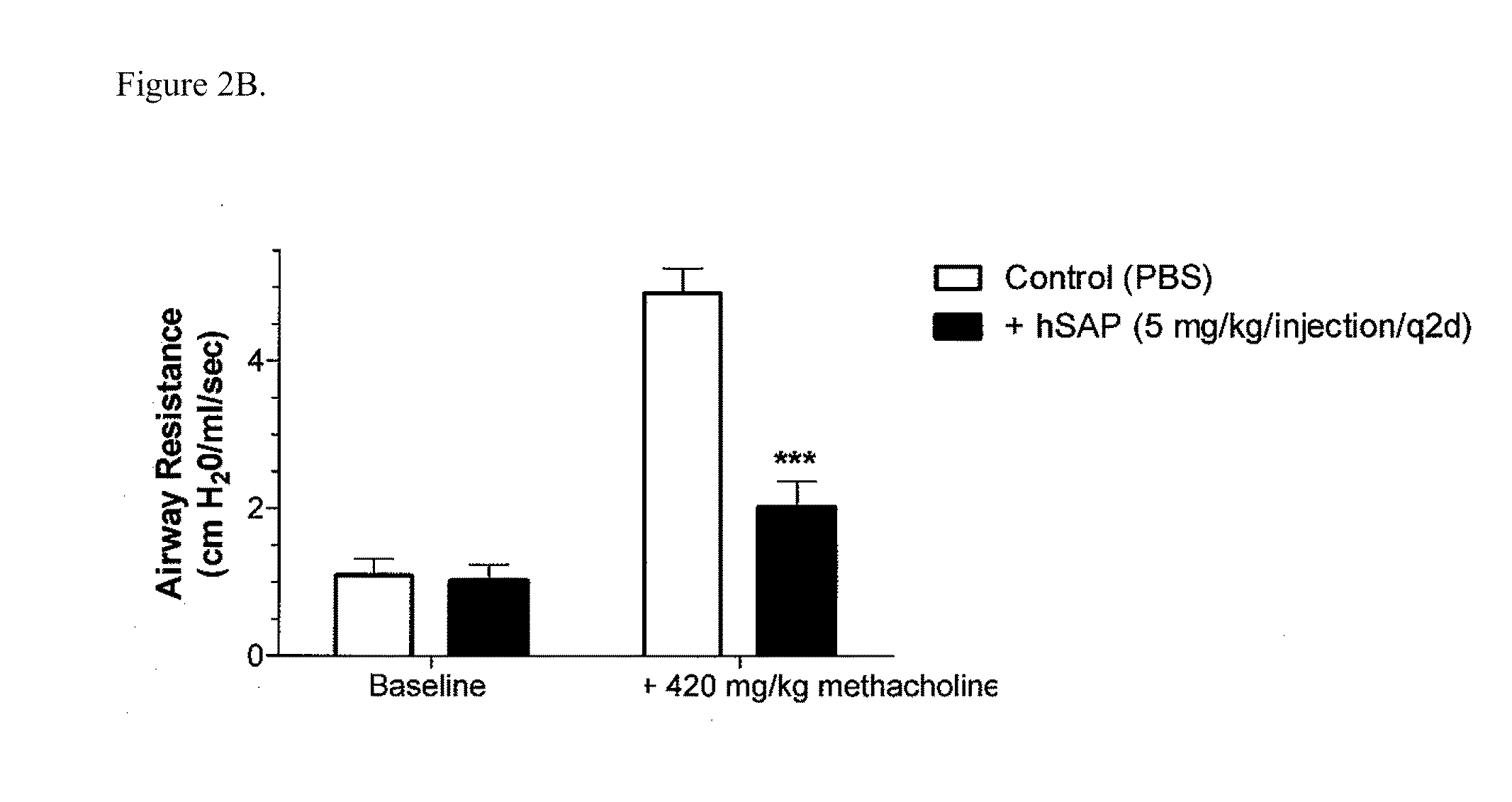Treatment and diagnostic methods for hypersensitive disorders
a hypersensitivity disorder and diagnostic method technology, applied in the field of hypersensitivity disorder treatment and diagnostic methods, can solve the problems of small complexes that form in blood vessel walls, affecting the immune response, so as to reduce the number of days a patient is hospitalized, inhibit or reduce the severity and delay the development of a hypersensitivity disorder.
- Summary
- Abstract
- Description
- Claims
- Application Information
AI Technical Summary
Problems solved by technology
Method used
Image
Examples
example 1
[0196]Chronic allergic airway disease induced by A. fumigatus conidia is characterized by airway hyper-reactivity, lung inflammation, eosinophilia, mucus hypersecretion, goblet cell hyperplasia, and subepithelial fibrosis. C57BL / 6 mice were similarly sensitized to a commercially available preparation of soluble A. fumigatus antigens as previously described (Hogaboam et al. The American Journal of Pathology. 2000; 156: 723-732). Seven days after the third intranasal challenge, each mouse received 5.0×106 A. fumigatus conidia suspended in 30 μl of PBS tween 80 (0.1%, vol / vol) via intratracheal route.
[0197]At day 15- and 30-time points (FIGS. 2A and 2B respectively), groups of five mice treated with SAP or control (PBS) were analyzed for changes in airway hyperresponsiveness (AHR). Bronchial hyperresponsiveness was assessed after an intratracheal A. fumigatus conidia challenge using a Buxco™ plethysmograph (Buxco, Troy, N.Y.). Briefly, sodium pentobarbital (Butler Co., Columbus, Ohio; ...
example 2
[0198]C57BL / 6 mice were similarly sensitized to a commercially available preparation of soluble A. fumigatus antigens as above described. Animals were treated in vivo with hSAP or PBS control for the last two weeks of the model. At day 15- and 30-time points (FIGS. 3A and 3B respectively), groups of five mice treated were analyzed for changes in cytokine production. Spleen cells were isolated from animals at 15 or 30 days after intratracheal conidia challenge, stimulated with aspergillus antigen, and treated in vitro with hSAP. Splenocyte cultures were quantified (pg / mL) for production of IL-4, IL-5, and IL-10.
example 3
[0199]C57BL / 6 mice were similarly sensitized to a commercially available preparation of soluble A. fumigatus antigens as above described. At day 15, the amount of FoxP3 expression was determined in pulmonary draining lymph nodes or splenocyte cultures. Pulmonary lymph nodes were dissected from each mouse and snap frozen in liquid N2 or fixed in 10% formalin for histological analysis. Histological samples from animals treated with PBS (control) or SAP were stained for FoxP3 (FIG. 4A), and the number of FoxP3+ cells were quantified relative to each field examined (FIG. 4B). Purified splenocyte cultures were stimulated with Aspergillus antigen in vitro in the presence or absence of SAP in vitro (0.1-10 m / ml) for 24 hours. Total FoxP3 expression was quantitated using real time RT-PCR (FIG. 4C).
PUM
| Property | Measurement | Unit |
|---|---|---|
| concentration | aaaaa | aaaaa |
| affinity | aaaaa | aaaaa |
| forced expiratory volume in | aaaaa | aaaaa |
Abstract
Description
Claims
Application Information
 Login to View More
Login to View More - R&D
- Intellectual Property
- Life Sciences
- Materials
- Tech Scout
- Unparalleled Data Quality
- Higher Quality Content
- 60% Fewer Hallucinations
Browse by: Latest US Patents, China's latest patents, Technical Efficacy Thesaurus, Application Domain, Technology Topic, Popular Technical Reports.
© 2025 PatSnap. All rights reserved.Legal|Privacy policy|Modern Slavery Act Transparency Statement|Sitemap|About US| Contact US: help@patsnap.com



